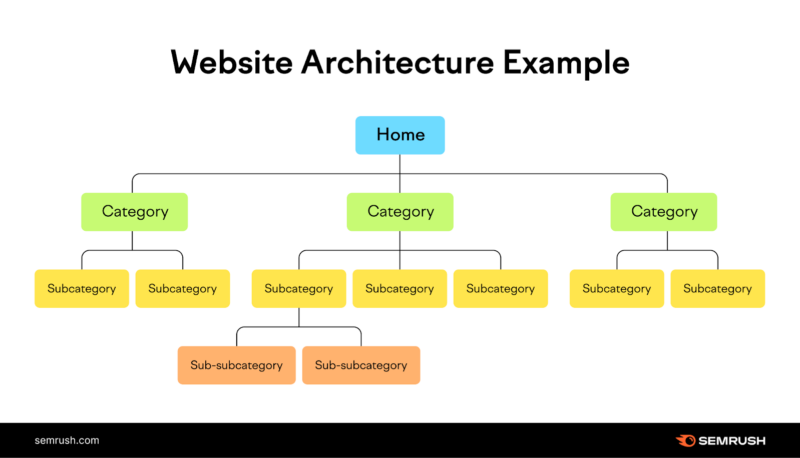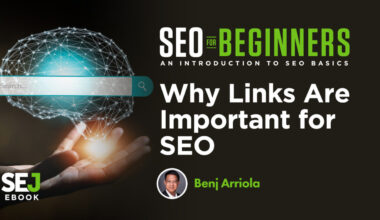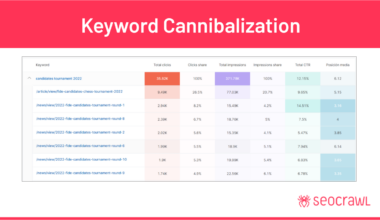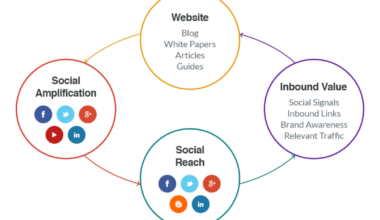Importance of Website Architecture for SEO
Website architecture plays a crucial role in determining the success of your SEO efforts. It refers to the way your website is organized and structured, including its navigation, URL structures, and sitemaps. A well-designed website architecture ensures that your website is user-friendly, easy to navigate, and provides a good user experience. This, in turn, helps search engines understand your website better, making it easier for them to crawl and index your pages.
One of the key benefits of having a good website architecture is that it helps search engines crawl and index your pages more efficiently. This means that your website will be more visible in search results, leading to increased traffic, higher rankings, and ultimately, more conversions. In addition, a well-structured website architecture also helps search engines understand the relationship between your pages, which can help them rank your content more accurately.
Another important aspect of website architecture is user experience. A well-designed website architecture ensures that your website is easy to navigate, with clear and intuitive menus and links. This makes it easier for users to find the information they are looking for, leading to a better user experience. A good user experience not only leads to higher engagement rates and lower bounce rates, but it also helps improve your SEO rankings, as search engines take user experience into account when ranking websites.
To create a good website architecture, it is important to follow best practices for website navigation, including using clear and intuitive menus, minimizing the number of clicks required to find information, and using breadcrumb navigation to help users understand their location on your website. In addition, it is important to pay attention to URL structure, ensuring that your URLs are clear, descriptive, and easy to read. A well-designed sitemap can also help search engines understand your website better, making it easier for them to crawl and index your pages.
In conclusion, website architecture is a critical component of SEO success. A well-designed website architecture helps search engines understand your website better, leading to higher rankings and increased traffic. It also helps improve user experience, leading to higher engagement rates and better SEO rankings. By following best practices for website navigation, URL structure, and sitemaps, you can create a website architecture that is both user-friendly and search engine-friendly, leading to long-term SEO success.
How Website Structure Affects User Experience
Website structure is more than just organizing pages and content in a logical manner. It also plays a crucial role in user experience. A site that is easy to navigate and understand will keep users engaged longer and decrease bounce rates. Here are some ways website structure affects user experience:
Clear Navigation
Navigation is one of the most important elements of website structure that affects user experience. A clear and concise navigation menu makes it easy for users to find what they are looking for. A poorly designed navigation menu, on the other hand, can leave users feeling frustrated and confused. It is essential to keep the number of menu items to a minimum and use descriptive labels that accurately represent the content on each page.
Minimize the Number of Clicks
The fewer clicks it takes for a user to find what they are looking for, the better. A user should be able to find information within three clicks or less. A well-organized website structure can help achieve this by using categories, subcategories, and tags that accurately represent the content on each page.
Breadcrumb Navigation
Breadcrumb navigation is a secondary navigation system that helps users understand their location on a website. It shows the user’s path from the homepage to the current page and makes it easy for them to backtrack to previous pages. Breadcrumb navigation is especially useful for websites that have a complex structure and many different categories.
Page Load Time
Page load time is another critical factor that affects user experience. Slow-loading pages can lead to frustration and cause users to leave the site. A well-designed website structure can help improve page load time by using optimized images, caching, and minifying CSS and JavaScript files.
In conclusion, website structure is a crucial component of user experience. A well-organized website that is easy to navigate, has clear labels, and loads quickly will keep users engaged and lead to better SEO rankings. By following best practices for website structure, such as clear navigation, minimizing clicks, and breadcrumb navigation, you can create a website that is both user-friendly and search engine-friendly.
Best Practices for Website Navigation
Website navigation is an essential component of website architecture that plays a significant role in user experience and SEO success. Here are some best practices for website navigation that can help improve your website structure and increase user engagement:
Use Clear and Descriptive Labels
The labels used in your navigation menu should be descriptive and accurately represent the content on each page. Avoid using vague or generic labels that do not provide any indication of what the user can expect to find on the page. For example, instead of using “Services” as a label, use “Web Design Services” or “SEO Services” to give users a clear idea of what to expect.
Keep the Number of Menu Items to a Minimum
The navigation menu should be simple and easy to understand. Avoid cluttering the menu with too many items, as this can overwhelm users and make it difficult for them to find what they are looking for. Keep the number of menu items to a minimum and prioritize the most important pages.
Use Logical and Consistent Grouping
Grouping related pages together in the navigation menu can help users find what they are looking for quickly and easily. Use logical and consistent grouping to make it easy for users to understand the relationships between different pages on your website.
Minimize the Number of Clicks Required to Find Information
The fewer clicks it takes for a user to find the information they are looking for, the better. Reduce the number of clicks required to find information by using categories, subcategories, and tags that accurately represent the content on each page. Make sure that users can access the most important pages with just a few clicks.
Use Breadcrumb Navigation
Breadcrumb navigation is a secondary navigation system that helps users understand their location on a website. It shows the user’s path from the homepage to the current page and makes it easy for them to backtrack to previous pages. Breadcrumb navigation is especially useful for websites that have a complex structure and many different categories.
In conclusion, website navigation is an essential component of website architecture that can significantly impact user experience and SEO success. By following best practices such as using clear and descriptive labels, keeping the number of menu items to a minimum, using logical and consistent grouping, minimizing the number of clicks required to find information, and using breadcrumb navigation, you can create a website that is both user-friendly and search engine-friendly.
Importance of URL Structure for SEO
URL structure is an essential aspect of website architecture that can impact your SEO rankings. It refers to the format of the URLs that make up your website’s pages. A well-designed URL structure can help search engines understand the content of your pages and how they relate to each other. Here’s why URL structure is crucial for SEO success:
Clear and Descriptive URLs
Clear and descriptive URLs are critical for both users and search engines. A URL that accurately represents the content of the page can help users understand what they can expect to find on the page before they click on it. For example, a URL such as “https://www.example.com/seo-services” is clear and descriptive, indicating that the page is about SEO services. On the other hand, a URL such as “https://www.example.com/page1” is vague and provides no indication of what the page is about. Clear and descriptive URLs can also help improve click-through rates, which can have a positive impact on SEO rankings.
Keyword-rich URLs
Including relevant keywords in your URLs can help search engines understand the content of your pages and improve your SEO rankings. However, it is essential to avoid keyword stuffing and ensure that the keywords used in your URLs are relevant to the content on the page. For example, a URL such as “https://www.example.com/seo-services-for-small-businesses” is keyword-rich and relevant to the content on the page.
Consistent URL Structure
Consistency in URL structure is crucial for both users and search engines. A consistent URL structure can make it easier for users to understand the relationships between different pages on your website and can help search engines crawl and index your pages more efficiently. It is essential to choose a URL structure that makes sense for your website and stick to it consistently. For example, if you choose to use a URL structure that includes category and subcategory names, make sure that all pages on your website follow this structure.
Avoid Duplicate Content in URLs
Duplicate content in URLs can cause confusion for users and search engines. It is essential to avoid using the same URL for multiple pages or using parameters that create multiple versions of the same page. Duplicate content can lead to lower SEO rankings and can harm user experience.
Use Hyphens to Separate Words
Using hyphens to separate words in your URLs can make them easier to read and understand for both users and search engines. It is essential to avoid using underscores or other characters that can cause confusion. For example, a URL such as “https
Role of Sitemaps in Website Architecture
Sitemaps are an essential part of website architecture that can have a significant impact on your SEO rankings. A sitemap is a file that lists all the pages on your website, making it easier for search engines to crawl and index your site. Here’s why sitemaps are important for SEO success:
Improved Crawling and Indexing
Sitemaps provide a roadmap for search engines to follow when crawling and indexing your website. This is especially important for websites with a complex structure or large number of pages. A well-designed sitemap can help search engines find and index all your pages, ensuring that they are included in search results.
Better Understanding of Website Structure
Sitemaps provide information about the structure of your website, including the hierarchy of pages and how they relate to each other. This helps search engines understand the relationships between different pages on your site, making it easier for them to rank your content more accurately.
Prioritization of Pages
Sitemaps can also help prioritize certain pages on your website that you want to rank higher in search results. By including these pages at the top of your sitemap, you can signal to search engines that they are the most important pages on your site.
Easy Updates and Maintenance
Sitemaps make it easy to update and maintain your website’s structure by providing a centralized location for all your pages. This makes it easy to add new pages, remove old ones, or make changes to your site’s structure without having to worry about broken links or other issues.
Submitting to Search Engines
Submitting your sitemap to search engines is an important step in ensuring that your website is crawled and indexed properly. Most search engines provide tools for submitting sitemaps, which can help them find and index your pages more efficiently.
In conclusion, sitemaps are an essential part of website architecture that can have a significant impact on your SEO rankings. By providing a roadmap for search engines to follow, helping them understand your website’s structure, prioritizing pages, making updates and maintenance easier, and submitting to search engines, sitemaps can help improve your website’s visibility and search rankings.
Final Thought: Optimizing Website Architecture for SEO Success
In conclusion, optimizing your website architecture is crucial for SEO success. A well-designed website architecture not only helps search engines understand your website better, but it also improves user experience and leads to higher engagement rates. By following best practices for website navigation, URL structure, and sitemaps, you can create a website that is both user-friendly and search engine-friendly.
To optimize your website architecture for SEO success, consider the following tips:
Use a Logical and Consistent Structure
A logical and consistent website structure can help search engines understand the relationships between different pages on your site. Use clear and descriptive labels, minimize the number of clicks required to find information, and use breadcrumb navigation to make it easy for users to understand their location on your website.
Create Clear and Descriptive URLs
Clear and descriptive URLs can help search engines understand the content of your pages and improve your SEO rankings. Use relevant keywords, avoid duplicate content, and use hyphens to separate words in your URLs.
Design a Well-Structured Sitemap
A well-designed sitemap can help search engines crawl and index your pages more efficiently. Make sure to include all the pages on your website, prioritize important pages, and submit your sitemap to search engines.
By optimizing your website architecture for SEO success, you can improve your website’s visibility, increase traffic and engagement rates, and ultimately drive conversions. Remember to focus on both user experience and search engine optimization when designing your website architecture, and follow best practices for website navigation, URL structure, and sitemaps. With a well-structured website architecture in place, you can achieve long-term SEO success.






















